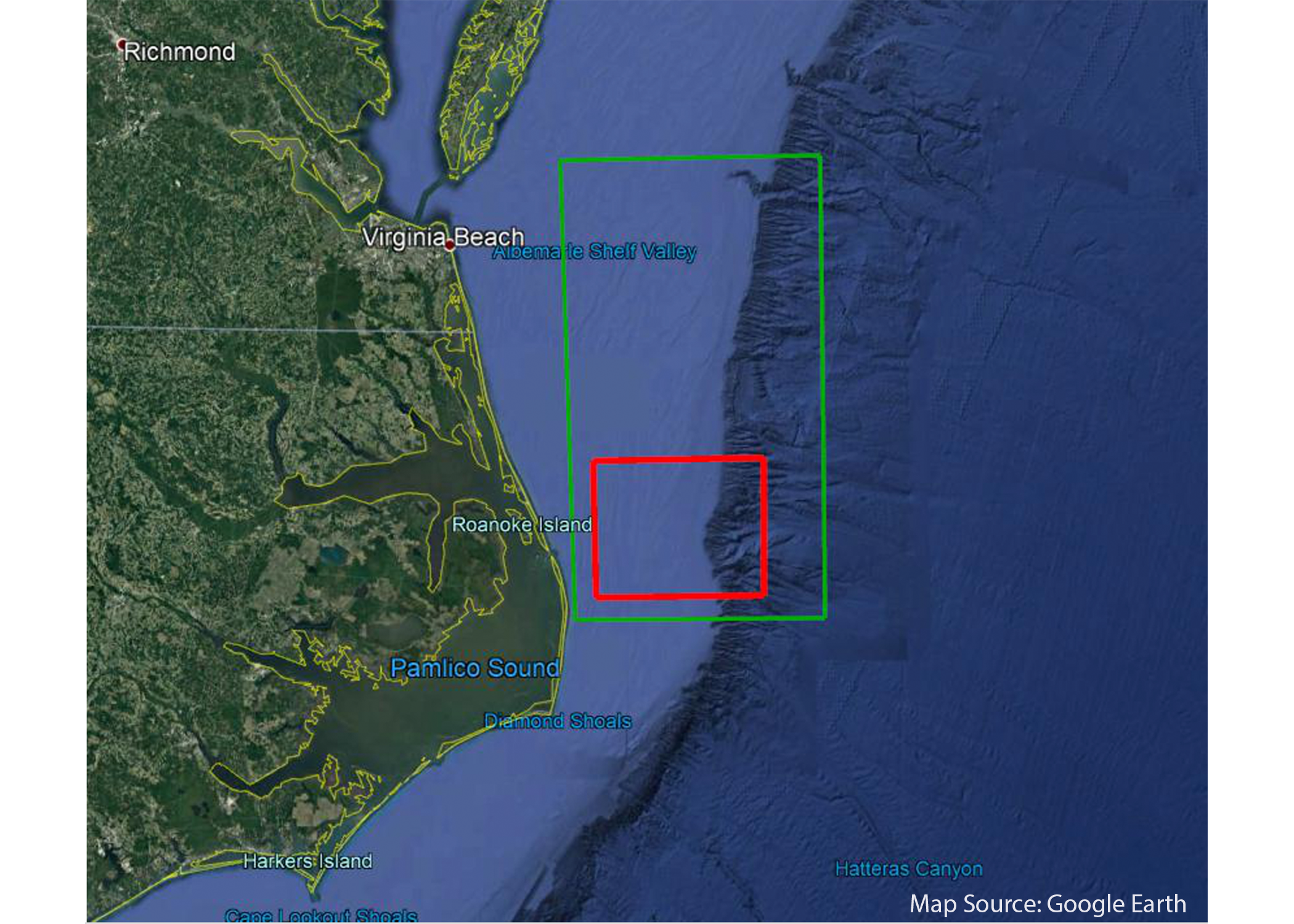Scoping the New Pioneer Array in the Southern Mid-Atlantic Bight
A very engaged group of participants spent the week of June 21st thinking about how to optimize the Pioneer Array for its relocation to the southern Mid-Atlantic Bight (MAB) in 2024. The five-day Innovations Lab, sponsored by the National Science Foundation (NSF) was led by the OOIFB (Ocean Observatories Initiative Facilities Board), a talented team of “Sparks”, Knowinnovation, Inc. (KI), and expertly supported by the OOI Facility. The group identified a range of representative interdisciplinary science questions that can be addressed using the Pioneer Array within the MAB and proposed optimum locations and potential configurations for the array.
Science question topics included air-sea interactions; the influence of estuarine plumes and the Gulf Stream on cross-shelf and shelf-slope exchanges and their impacts on ocean chemistry and biology; benthic-pelagic coupling; and canyon processes. Participants converged on a general region (see boxes in Figure 1 below) that would best address the science questions.
“The Innovations Lab was very successful, and we really appreciate the community sharing their innovative ideas with us in this essential first step,” said Kendra Daly, chair of the OOIFB. “The Innovations Lab provides an excellent start to a long process of fleshing out the details to ensure that the array provides data to investigate a broad range of interdisciplinary science questions, while also being robust enough to weather the challenging environmental conditions in the Mid-Atlantic Bight.”
The OOIFB will continue to engage with the OOI community to refine the array’s design for implementation over the next two years. The Innovations Lab showed that there is strong community interest in coastal science, the potential for new partnerships, and excitement about implementing the Pioneer Array in its new location.

